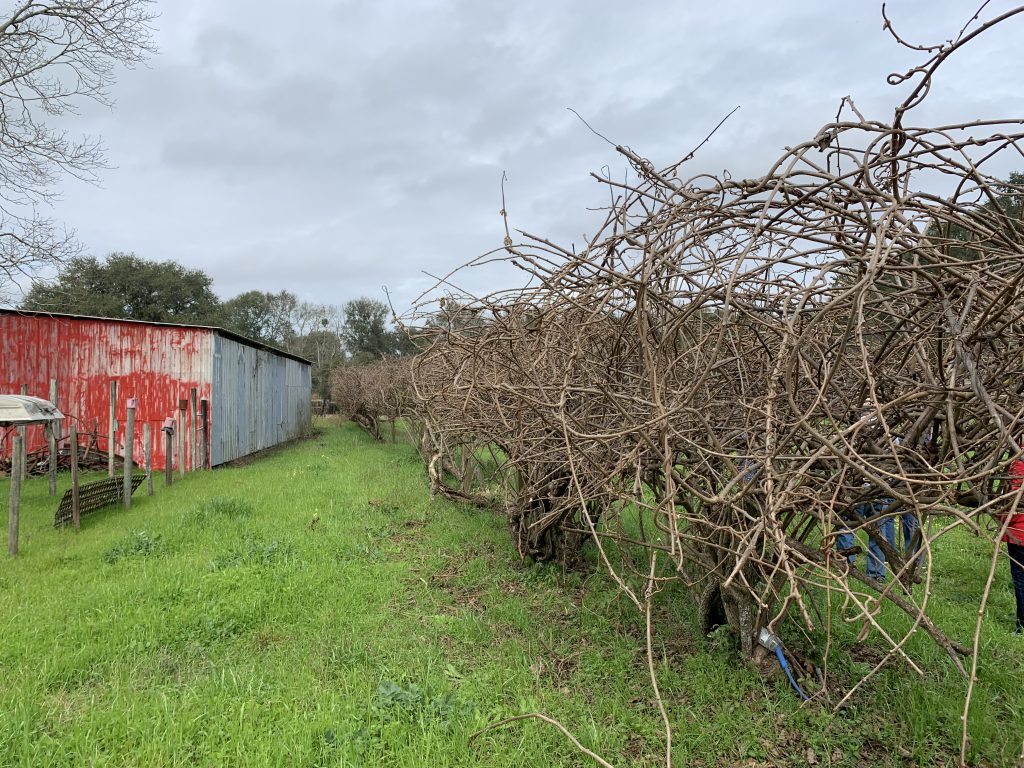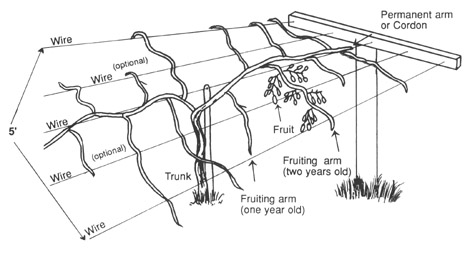
Twisted and tangled kiwifruit plants in a North Florida orchard. Photo Credit: Matt Lollar, University of Florida/IFAS Extension – Santa Rosa County
When we think of kiwis, we think of fuzzy, slightly tart, egg-shaped fruits from somewhere in the Southern Hemisphere. However, there is a species (Actinidia chinensis) of kiwi with smooth skin, sweet taste, and golden color.
Commonly available cultivars of this species are ‘AU Golden Dragon’ and ‘AU Golden Sunshine’. Most years, kiwis won’t produce much of a crop in North Florida because they won’t receive enough chill hours, but they might be fun to try for the adventurous gardener.
- Site Selection – Kiwis perform best in well-drained soils with a neutral pH (around 7.0). High winds may cause canes to break and scar fruit, so a windbreak is recommended or they can be planted near a structure.
- Irrigation – Kiwis need a lot of water during the summer. This is partly due the their large leaves that transpire rapidly because of surface area. Newly planted kiwis should be watered deeply at least once a week.
- Fertilization – Fertilize kiwis three times a year (January, April, and June). Do not apply fertilizer after the month of July to reduce the incidence of cold injury in the winter.
- Insects and Diseases – The most common insects of kiwis are mites and scales. To reduce the incidence of disease, plant kiwis at least 15 feet apart and train on a trellis.
- Training – A T-bar trellis, similar to the system used to train grape vines, or a pergola should be used to provide support for the plants. Once the plants are established (2 to 3 years after planting), about a third of the vines should be removed each year.
Kiwis are wind- and insect-pollinated. Good growing conditions and insect pollination help increase fruit size. Male and female plants are required for good fruit yields. At least one male (pollen producing) plant should be planted for every four female (fruit producing) plants.
Kiwi plants will soon be planted for evaluation at the West Florida Research and Education Center in Jay, FL. Please stay tuned for future data! For more information on growing kiwis in the Southeast, please visit these webpages:
Bringing Home the Gold – Auburn horticulture alum gets kiwifruit orchard off the ground in Reeltown
- Gardening in the Panhandle LIVE! Program Summary: Pests of Florida Lawns and Landscape Plants - May 28, 2025
- Fun Facts About Ferns - April 30, 2025
- Gardening in the Panhandle LIVE! Program Summary: Freeze Friendly Foliage Plants - April 30, 2025

